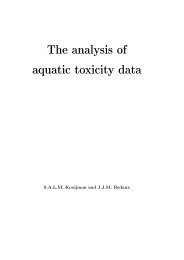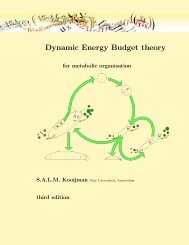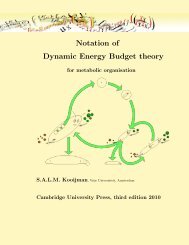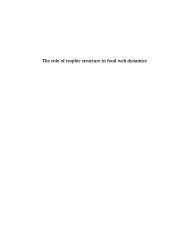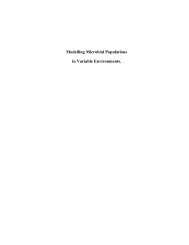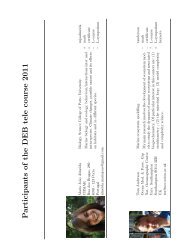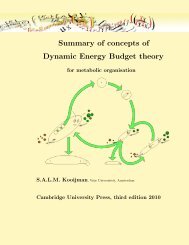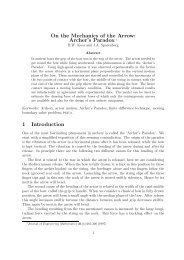Archery and Mathematical Modelling 1
Archery and Mathematical Modelling 1
Archery and Mathematical Modelling 1
You also want an ePaper? Increase the reach of your titles
YUMPU automatically turns print PDFs into web optimized ePapers that Google loves.
a) b)Figure 1: Non-recurve bows: Static deformation shapes (a) of the KL-bow <strong>and</strong> (b) of the ANbow.sections. The results were used to determine the bending properties of the limbs. Finallythe elastic modulus <strong>and</strong> the mass of the string were measured.The predicted weight was too high <strong>and</strong> therefore a knockdown factor was used for thebending stiffness of the limbs, so that the calculated weight became equal to the measuredvalue. The predicted amount of energy stored in the bow by drawing it from the bracedsituation to full draw, differed only slightly from the measured value. The measuredefficiency was a few percent below the calculated value. In the model internal <strong>and</strong> externaldamping are neglected. This explains part of the discrepancy.4 Classification of the bowThe classification of the bows we use is based on the geometrical shape <strong>and</strong> the elasticproperties of the limbs. The bows of which the upper half is depicted in Figure 1 are callednon-recurve bows. In the model the bow is assumed to be symmetric with respect to theline of aim. So we need to deal with only one half of the bow. These bows have contactwith the string only at their tips. In the case of the static-recurve bow, see Figure 2, theoutermost parts of the recurved limbs (the ears) are stiff. In the braced situation the stringrests on string-bridges. These string-bridges are fitted to prevent the string from slippingpast the limbs. When such a bow is drawn, at some moment the string leaves the bridges<strong>and</strong> has contact with the limbs only at the tips. In a working-recurve bow the limbs arealso curved in the ’opposite’ direction in the unstrung situation, see Figure 3. The partsof a working-recurve bow near the tips, however, are elastic <strong>and</strong> bend during the finalpart of the draw. When one draws such a bow, the length of contact between string <strong>and</strong>limb decreases gradually until the point where the string leaves the limb coincides with the4





